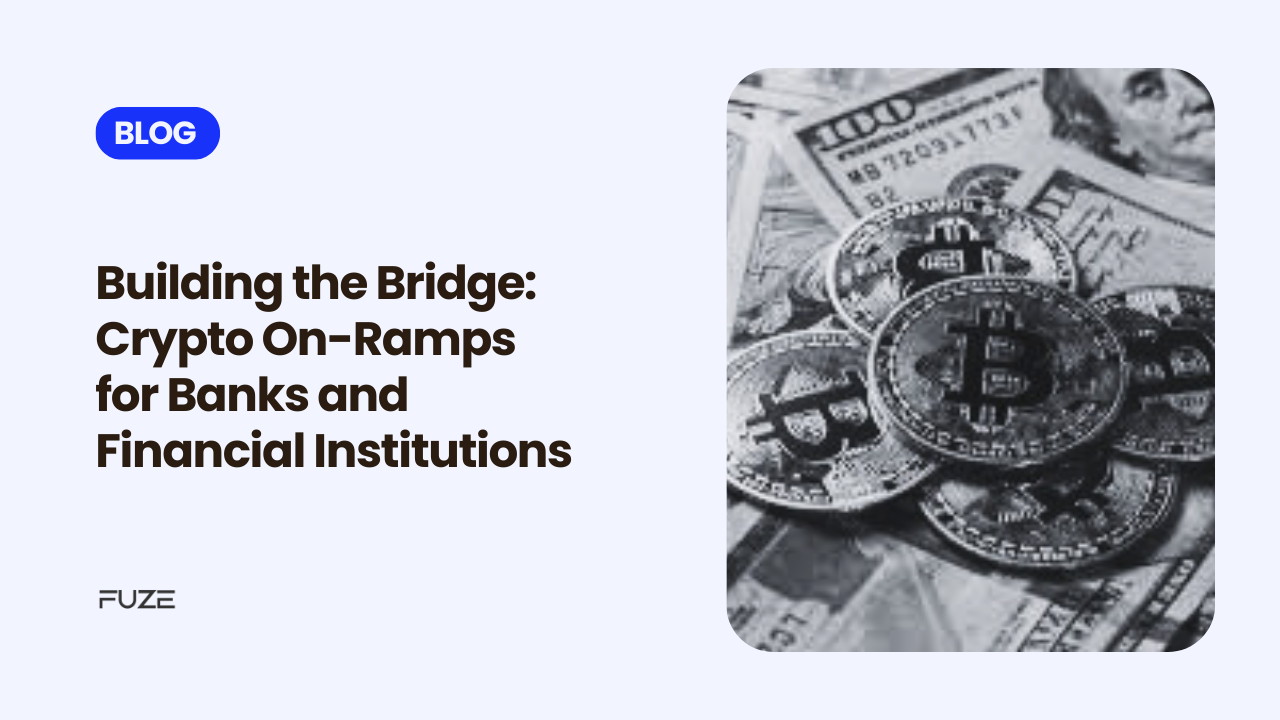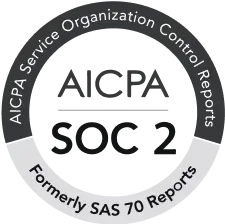The advent of cryptocurrency has revolutionized the financial landscape, bringing both opportunities and challenges to traditional banks and financial institutions. One of the critical aspects of enabling these institutions to fully integrate with the digital asset ecosystem is the establishment of crypto on-ramps. But what’s a crypto on-ramp, and why does it matter so much for the future of finance? Let’s explore that here in this blog as we cover the concept of crypto on-ramps, how they work, and why they are critical to banks and other financial institutions as they consider embracing the digital asset revolution.
What Is a Crypto On-Ramp
Crypto on-ramps are platforms or services that convert a user’s traditional fiat currency, such as the US dollar or euro, into cryptocurrencies, such as Bitcoin, Ethereum, or other digital assets. The on-ramp, therefore, becomes the “entry point” for those who seek to enter the cryptocurrency world. It serves as the connection between the traditional financial system and the new, decentralized crypto economy.
For banks and financial institutions, adopting crypto on-ramps is an essential step towards integrating digital assets into their offerings. By providing seamless, compliant ways for their customers to purchase cryptocurrencies, they can tap into the growing demand for digital assets and expand their services to meet modern financial needs.
Why Are Crypto On-Ramps Important for Banks and Financial Institutions
- Enhancing Customer Offerings
Individuals, businesses, and institutional investors are all exploring crypto for a variety of reasons, including hedging against inflation, diversifying investment portfolios, and even conducting transactions. Banks and financial institutions that offer crypto on-ramps can meet this demand by providing their clients with easy access to cryptocurrencies.
There is also the possibility that instead of diverting customers to third-party exchanges or platforms, banks can be trusted points of entry into the crypto world. This not only makes the customer experience richer but also gives banks an opportunity to deepen and retain the relationship by offering a wide variety of financial products and services.
- Expanding Revenue Streams
Traditional banking services usually consist of deposit accounts, lending, and managing assets, through which the banking industry derived their revenue streams. The entry of digital assets is an opportunity to expand these revenues through offering other crypto-related products. The crypto on-ramps that are included by banks will be fee-generating when there is crypto conversion, trading, and even advice on how clients can venture into the space of cryptocurrencies.
The digital asset market has been expanding exponentially, and providing crypto services is a gateway for banks to leverage this rapidly emerging trend. In addition to the potential revenues from transaction fees, banks may also provide complementary services such as staking, crypto-backed loans, and custody solutions that add further revenue opportunities.
- New Frontiers in Institutional Adoption
For institutional investors, the biggest entry barrier was that there were no safe, regulated, and reliable ways to buy and store digital assets. Crypto on-ramps can be used by financial institutions as trusted intermediaries to access and store cryptocurrencies in a secure, compliant manner for their clients.
Crypto on-ramps create a smoother market entry for the institutional clients. For instance, hedge funds, family offices, pension funds, and asset managers can rely on these on-ramps to change large amounts of fiat into digital assets, thus diversifying portfolios with more confidence.
- Financial Inclusion
Cryptocurrencies have the potential to promote financial inclusion by providing people who are underserved by traditional banking systems with access to a new financial ecosystem. By offering crypto on-ramps, banks can help individuals in regions with limited access to banking services tap into the digital economy. People can use their smartphones to convert their fiat currency into cryptocurrency and access financial services, such as cross-border payments or savings accounts, without needing to rely on traditional banks or financial institutions.
For the banks, this presents an opportunity to extend services to previously underserved populations while embracing technological advancement brought into the plate by the cryptocurrencies.
- Mitigation of risks and compliance
The regulatory environment for cryptocurrencies has always been a huge concern for banks and financial institutions. Having crypto on-ramps that comply with local and international regulations can mitigate risks in AML and KYC requirements.
It gives them peace of mind in terms of regulatory compliance and provides a safe experience for their clients. Therefore, the establishment of trust on both sides between the regulators and customers is guaranteed, avoiding any legal or reputational risks.
Key Components of Crypto On-Ramps for Banks
- Fiat-to-Crypto Conversion: The most primary characteristic of any crypto on-ramp is fiat currency conversion to digital assets. This usually goes hand in hand with a cryptocurrency exchange or some form of a payment processor, thus allowing the trading of cryptocurrencies through buying and selling. In offering the service, any financial institution that does this has to make it seamless, convenient, and also accessible to numerous customers.
- Integration of Payment Gateway: Integration with existing payment gateways is also essential for the crypto on-ramps to ensure seamless fiat-to-crypto transactions. The payment gateways used must support several modes of payments like bank transfers, credit/debit card payments, and even digital wallets. In fact, the integration with the existing financial systems must be there to ensure customers can easily move their funds between traditional banking services and crypto assets.
- Security and Compliance: Security is of prime importance for banks. A regulated crypto on-ramp has to strictly adhere to all security standards while providing a high level of protection to fiat as well as digital assets. Key features include multi-factor authentication (MFA), cold storage of cryptocurrencies, and high levels of encryption methods. Compliant regulations like AML and KYC have to be strictly followed in order to curb fraud and money laundering.
- User Experience (UX) and Interface: For crypto on-ramps to be widely adopted, a smooth, intuitive user experience is critical. Banks should keep the process of buying and selling cryptocurrencies simple for their customers. Clear, easy-to-follow interfaces, fast transaction speeds, and helpful customer support, all contribute to the success of a crypto on-ramp.
- Liquidity and Scalability: Liquidity is another critical aspect of crypto on-ramps. Banks must ensure there is enough liquidity for their customers to execute large transactions with minimal slippage in prices. Scalability becomes vital to accommodate more users and greater transaction volumes as adoption grows.
Challenges of Crypto On-Ramps Implementation
- Regulatory Uncertainty: Though regulations in certain regions are growing clearer, most parts of the world remain in a state of ambiguity regarding cryptocurrency regulation. For banks, the regulatory patchwork presents a formidable challenge, particularly as they design their on-ramp offerings that should meet both domestic and international regulations.
- Security Concerns: Cryptocurrencies are still associated with cybercrime and security breaches. Financial institutions have to invest in a robust security system to protect the funds of their customers as well as their own infrastructure from hacks and fraud.
- Customer Education: The crypto space is still a relatively new territory for most of its users. Financial institutions providing crypto on-ramps will be required to give their customers insights regarding how digital assets work, risks involved, and how to utilize crypto safely.
- Operational Complexity: The integration of crypto on-ramps with the traditional banking systems can be highly complex and demand huge investments in technology, training, and infrastructure. The banks will have to collaborate closely with crypto technology providers for a seamless integration process.
Conclusion
Crypto on-ramps are the gateway for banks and financial institutions to enter the world of cryptocurrencies. They help institutions meet customer demand, diversify their revenue streams, and enhance their competitive edge by providing seamless, secure, and compliant ways to convert fiat to digital assets.
As the demand for cryptocurrencies continues to grow, the need for crypto on-ramps will only increase. By embracing this new financial infrastructure, banks and financial institutions can position themselves at the forefront of the digital asset revolution, enabling their customers to participate in the new economy while meeting the regulatory and security standards of traditional finance.
Disclaimer: Virtual assets carry significant risks, including high volatility and potential loss of your entire investment. They are not backed by governmental protections, and recourse may be limited in case of loss. Always assess your risk tolerance, fully understand the risks, and seek independent financial advice if needed before investing.
Frequently Asked Questions
- How can banks ensure compliance with regulations when offering crypto on-ramps? Banks can ensure compliance by working with licensed and regulated crypto service providers. These providers follow local and international regulations, including anti-money laundering (AML) and know-your-customer (KYC) rules, ensuring that transactions are secure and legal.
- What types of cryptocurrencies can be purchased through crypto on-ramps? Crypto on-ramps typically support a variety of popular cryptocurrencies such as Bitcoin (BTC), Ethereum (ETH), and stablecoins (e.g., USDC, Tether). Some on-ramps may also offer access to other digital assets like security tokens, NFTs, or emerging cryptocurrencies.
- What are the security features that banks should look for in crypto on-ramps? Banks should look for crypto on-ramps with advanced security features such as two-factor authentication (2FA), encryption, cold storage, multi-signature wallets, and fraud detection mechanisms. These security measures help protect customer funds and prevent cyber threats.
- Can crypto on-ramps be integrated with existing banking systems? Yes, crypto on-ramps can be integrated with traditional banking systems, although the process may involve technical adjustments. Financial institutions often partner with crypto technology providers to ensure seamless integration with their existing infrastructure, making it easy for customers to buy and store digital assets.
- Are crypto on-ramps suitable for both retail and institutional clients? Yes, crypto on-ramps are designed to serve both retail and institutional clients. While retail clients can access user-friendly interfaces to buy digital assets, institutional clients often benefit from advanced features like larger transaction volumes, deeper liquidity, and more complex compliance and reporting tools.







